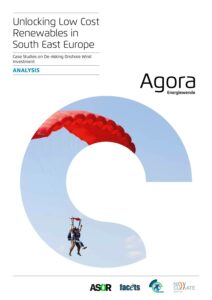By 2030, South East European (SEE) countries will have to replace around 50 per cent of their existing conventional power capacity for age-related reasons. To date, most SEE countries have relied heavily on conventional power for their electricity production, while renewable energy use is still limited. Therefore, these countries are at a cross-roads between investing in and expanding renewable energy capacity or upgrading and renewing their old conventional power plants.
This report explores how various policy and financial instruments could impact the financing costs of renewable energy investment in SEE countries, specifically examining onshore wind investments in two SEE countries – Greece and Serbia – as case examples. In particular, it shows the significant cost reduction potential for investment in renewable energy sources (RES) that could result from inclusion of derisking measures in the new EU budget framework, in conjunction with the implementation of the new Renewable Energy Directive (RED II).


